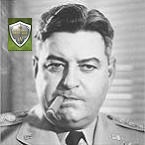ORIGINAL: Curtis Lemay
Infantry full load: 2000 rounds per squad. Fraction: 200 rounds per squad.
Artillery full load: 200 rounds per gun. Fraction: 20 rounds per gun.
Tank full load: 500 gallons per tank. Fraction: 50 gallons per tank.
Whatever the strength of that infantry squad is relative to its full strength, the gun and the tank will be comparable.
What you ignore is that while two hundred rounds of ammunition will weigh perhaps fifteen pounds, fifty gallons of fuel will weigh 350 pounds, and twenty 105 mm artillery rounds come in at about 2000 pounds.
Equally to the point, infantry -- at least in the defensive -- tends to preserve some combat value so long as the natural human impulse towards self-preservation remains channeled in a militarily efficacious direction (i.e., unit cohesion holds and the men don't flee or surrender). That dug-in infantry battalion remains a formidable obstacle so long as it has a minimum of food and a minimum of ammunition. A few hundred rounds of ammo and the men not actually passing out from fatigue or hunger and no one's going to want to try going up that hill unless they've got a whole lot of help. In this connection, look at how long it would take to actually clear Pacific Islands of all Japanese -- even long after they had exhausted all their heavy munitions. Had the Japanese defenders had to rely solely on their ability to continue artillery fire, those islands would have all been cleared up in short order.
The other arms are able to exploit the human element to a much less significant degree. It doesn't matter how resolute and able the gunners of a battery may be: they can't hurl shells ten miles if they haven't got them. Similarly, of course, for tanks.
I see a real variation in the degree to which combat efficacy declines according to supply and 'readiness' condition. This variation depends heavily on the type of weapon under discussion. Similarly, and for related reasons, offensive potency declines more rapidly than defensive potency. The arms and abilities needed for offensive action wane far more quickly than the ability to conduct a reasonably effective defense.
This goes far to explain why offensives tended to come to a halt -- your rather predictable attempts to argue otherwise notwithstanding. If we were able to simulate this differing rate of decline, TOAW would model the dynamics governing offensives more accurately.
I have proposed what I think is a practical way of doing this. My interest is not actually in a sterile debate where you are (once again) attempting to deny the desirability of any change at all, but in the feasibility and advisability of the change I have proposed.
This is an area where TOAW fails to adequately model an important aspect of twentieth century warfare. It's simply pointless obstinacy to argue otherwise. Now, whether my suggestion would improve matters, whether it's feasible, whether there's some more attractive mechanism -- those really are the points that should be under discussion.








